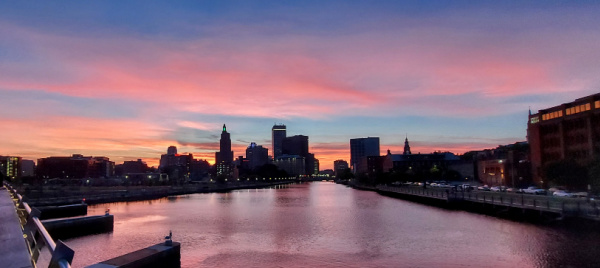
According to Smithsonian, cities have seen benefits in “daylighting,” or uncovering urban waterways that have been buried or covered over. can have many benefits, from improving water quality and wildlife habitat to creating new public spaces and promoting sustainable urban development. However, there are also potential challenges and negative impacts to consider.
Benefits:
Daylighting waterways can have a number of positive impacts on the environment, economy, and community, including:
- Improved water quality by increasing oxygen levels, reducing sedimentation, and filtering pollutants.
- Increased biodiversity: new habitat for wildlife, such as fish, birds, and insects in urban areas.
- New public spaces, such as parks, trails, and plazas, for residents and visitors to enjoy.
- Enhanced aesthetic and functional design of urban areas, promoting sustainable development and improving quality of life.
- Economic benefits: attracting new businesses, residents, and visitors to urban areas, boosting the local economy and promoting economic growth.
Potential challenges:
- Cost: requires significant investments in planning, design, construction, and ongoing maintenance.
- Disruption: can disrupt existing land uses and activities, causing conflicts between different stakeholders and disrupting traffic and transportation.
- Water quality: can increase the risk of flooding and erosion, which can lead to increased sedimentation and nutrient runoff.
- Public safety: can pose safety risks to the public, particularly if they are not designed and maintained properly.
Examples of Successful Daylighting Projects
Many cities across the United States have successfully daylighted their waterways, demonstrating the potential benefits and challenges of this approach. Some examples include:
- Providence, R.I.: Providence’s Waterplace Park project, completed in the 1990s, involved uncovering the Providence River and creating a new public park and pedestrian promenade along its banks.
- San Antonio, Tex.: San Antonio’s River Walk project involved uncovering the San Antonio River and creating a new public park and pedestrian walkway, which has become a major tourist destination.
- Seattle, Wash.: Seattle’s Thornton Creek project involved uncovering a section of the Thornton Creek that had been buried in a culvert, creating new habitat for wildlife and improving water quality.
- Los Angeles, Calif.: Los Angeles’ Taylor Yard G2 River Park project involves daylighting a portion of the Los Angeles River, creating new public space and improving ecological health.
Daylighting waterways has become an increasingly popular approach for cities across the U.S. to revitalize urban areas and promote sustainable development. While this approach has many benefits, it is important to recognize the potential challenges and negative impacts. By learning from successful examples of daylighting projects and carefully planning, designing, and managing these projects, cities can unlock the full potential of their waterways.
photo: Sunset over the Providence River by endomentalArtistry
